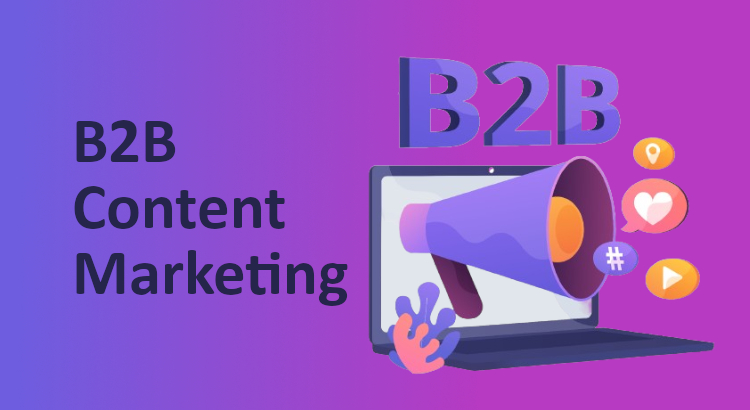B2B content marketing has emerged as a crucial strategy for fostering connections, driving engagement, and ultimately boosting revenue.
This article explores the intricacies of B2B content marketing, offering insights into its definition, strategic elements, and providing illustrative examples to illuminate its practical application.
Related Article: B2B Marketing Best Practices: Elevate Your Brand to New Heights
What Is B2B Content Marketing
Business-to-business (B2B) content marketing involves creating and distributing valuable and relevant content to attract and engage a target audience within the B2B sector.
Unlike traditional advertising, this approach aims to build trust, establish thought leadership, and generate leads through informative, educational, or entertaining content.
Benefits of Content Marketing for B2B Businesses
Content marketing yields numerous benefits for B2B businesses. From enhancing brand awareness and credibility to nurturing leads and driving conversions, a well-crafted content strategy serves as a powerful tool in the arsenal of B2B marketers.
B2B Content Marketing Strategy
Here is a detailed guide to help you create an effective B2B content marketing strategy.Top of Form
1. Conduct Audience Research
Understanding your target audience is the cornerstone of any successful content strategy. Conduct thorough research to identify their pain points, preferences, and information needs.
This knowledge will shape the content you create and ensure it resonates with your audience.
2. Perform a Content Audit
Before diving into new content creation, assess the performance of your existing content. Identify top-performing pieces, understand audience engagement, and recognize areas for improvement.
This content audit will inform your strategy, helping you refine your approach and capitalize on successful content elements.
3. Create Content for All Phases of the Marketing Funnel
Develop content that aligns with each stage of the marketing funnel – from building awareness to nurturing leads and driving conversions.
Tailor your content to address the specific needs and questions your audience may have at different stages of their buyer’s journey.
4. Experiment with Content Types
Diversify your content portfolio to cater to varied audience preferences. Explore a range of content types, including:
- Blog Posts: Share insights, tips, and industry trends.
Related Article: Trending Blog Topics: Get Ideas for Your Next Blog Post
- Success Stories: Showcase your expertise through client success stories.
- Research Reports: Provide in-depth analysis and valuable industry insights.
- Podcasts: Engage your audience through audio content.
- Videos: Deliver visually appealing and informative content.
Useful Article: Video Marketing Strategy: A Deep Dive into Proven Tactics
- Webinars: Host interactive sessions to educate and engage.
Experimenting with these formats allows you to discover what resonates most with your audience.
5. Build Topical Authority
Position your brand as an industry thought leader by consistently creating content that demonstrates expertise. Share insights, thought-provoking analyses, and solutions to industry challenges. Building topical authority not only attracts your target audience but also instills trust and credibility in your brand.
6. Distribute Your Content Effectively
Creating great content is just the first step; effective distribution is equally crucial. Utilize various distribution channels to maximize your content’s reach:
Blogs
Leverage your website’s blog to consistently share insightful content, driving engagement and establishing your brand as an industry authority.
Useful Article: How to Start a Blog: A Step-by-Step Guide
Email Marketing
Forge direct connections with your audience through personalized and targeted email campaigns, delivering valuable content directly to their inboxes.
Social Media
Utilize platforms like LinkedIn, Twitter, and Facebook to connect with your audience, sharing industry insights and fostering engagement within the professional community.
Related Article: What’s the Key to Successful LinkedIn Ad Campaigns for B2B Audiences?
Content Syndication
Extend your content’s reach by strategically distributing it through reputable third-party platforms, maximizing visibility and attracting diverse audiences.
Paid Channels
Invest in targeted paid advertising to enhance the visibility of your content, reaching a broader audience and driving traffic to your B2B offerings.
7. Document Your B2B Content Strategy
Maintain a documented strategy that outlines your goals, target audience, content calendar, and distribution plan.
Having a clear and documented strategy provides a roadmap for your team, ensuring consistency and allowing for adjustments based on performance metrics.
B2B Content Marketing Examples
Explore real-world examples of successful B2B content marketing campaigns to learn more insights. These B2B content marketing examples illustrate how diverse content types can be leveraged effectively within the B2B space.
In a Nutshell
A well-executed B2B content strategy stands as a cornerstone for success. As businesses evolve, embracing the principles of audience-centricity, diversified content creation, and strategic distribution is key to establishing a robust B2B content marketing framework that drives results.
Image by vectorjuice on Freepik


